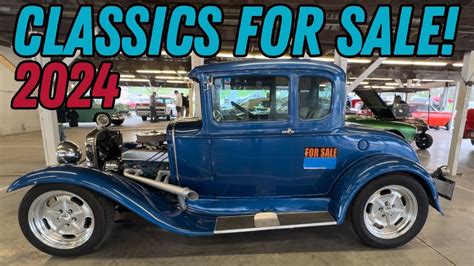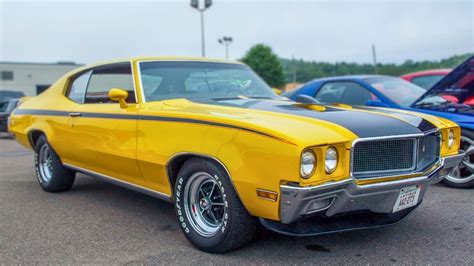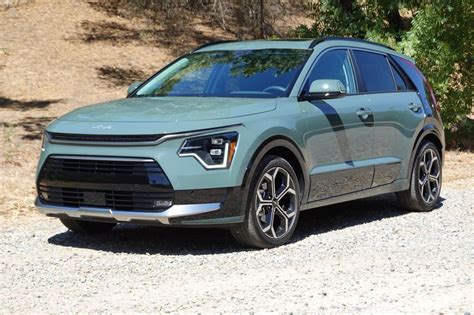
Classic car values are experiencing a significant correction, presenting a potential opportunity for enthusiasts to acquire coveted vehicles at more accessible prices, though experts caution against expecting a return to peak market conditions anytime soon.
The red-hot classic car market, fueled by pandemic-era stimulus and a surge in alternative investments, is cooling down considerably, with prices declining across various segments. According to Hagerty, a leading insurer and valuation expert for classic cars, the market is “definitely in a correction,” with some segments experiencing more pronounced drops than others. This shift presents a potential buying window for enthusiasts who may have been priced out during the market’s peak.
While the overall market remains above pre-pandemic levels, the rate of appreciation has slowed dramatically, and in many cases, reversed. “The rising tide that lifted all boats is definitely receding,” notes Hagerty, indicating a return to a more discerning market where condition, rarity, and provenance play a more significant role in determining value.
The data supports this assessment. Hagerty’s Market Rating, which tracks overall classic car market activity, has been trending downward. While specific models and marques continue to perform well, broad-based gains are less common. This correction is attributed to several factors, including rising interest rates, inflation, and a shift in consumer spending habits as the pandemic’s influence wanes. Furthermore, the initial influx of new, often less-experienced, buyers into the market has subsided, leaving a more seasoned group of collectors and enthusiasts.
“We went through a period where people were willing to buy just about anything with wheels and an engine,” explains a Hagerty analyst. “That’s no longer the case. Buyers are becoming more selective, and they’re demanding higher quality for their money.” This increased scrutiny is particularly evident in the high-end segment, where auction results have become more inconsistent. While exceptional examples of rare and desirable cars still command top dollar, vehicles with flaws or questionable histories are struggling to find buyers.
The impact of the correction varies across different segments of the classic car market. Muscle cars, for example, which saw significant price increases during the pandemic, are now experiencing a more pronounced pullback. Conversely, certain European sports cars and pre-war classics have proven more resilient, reflecting their enduring appeal and limited supply. The availability of replacement parts and the ease of maintenance also contribute to a vehicle’s long-term desirability.
The correction doesn’t necessarily signal a collapse of the classic car market. Instead, it represents a recalibration, bringing values back in line with historical trends and underlying fundamentals. “The market was overheated, and a correction was inevitable,” says a classic car dealer. “This is a healthy development that will ultimately benefit the market in the long run by weeding out speculators and attracting genuine enthusiasts.”
For potential buyers, the current market conditions offer a chance to acquire cars that were previously out of reach. However, it’s crucial to approach the market with caution and conduct thorough due diligence. “Now is the time to do your homework,” advises a Hagerty valuation specialist. “Research the specific model you’re interested in, inspect the car carefully, and get an independent appraisal.” It’s also essential to factor in the costs of maintenance, repairs, and insurance when assessing the overall affordability of a classic car.
The long-term outlook for the classic car market remains positive, driven by a passionate community of collectors and the enduring appeal of vintage automobiles. While prices may continue to fluctuate in the short term, the underlying demand for well-preserved and historically significant vehicles is expected to remain strong. The current correction simply provides a more rational and accessible entry point for enthusiasts looking to own a piece of automotive history. The era of quick profits and speculative buying appears to be over, replaced by a more traditional market driven by passion, knowledge, and a long-term perspective.
Furthermore, the definition of what constitutes a “classic car” is evolving. As newer vehicles age and gain historical significance, they are increasingly being recognized as collectible. This expansion of the market broadens the appeal of classic car ownership and attracts a new generation of enthusiasts. The shift towards electric vehicles also influences the classic car market, as collectors seek to preserve and celebrate the internal combustion engine.
The classic car market’s correction reflects broader economic trends. Interest rate hikes by the Federal Reserve have made borrowing more expensive, impacting demand for discretionary purchases like classic cars. Inflation has also eroded consumer purchasing power, leading some potential buyers to postpone or scale back their collecting ambitions. These macroeconomic factors contribute to the overall cooling of the market and reinforce the need for careful financial planning when considering a classic car purchase.
The digital age has also played a role in shaping the classic car market. Online auction platforms and marketplaces have increased transparency and accessibility, connecting buyers and sellers from around the world. This increased competition has put downward pressure on prices, particularly for vehicles that are widely available. However, the digital realm also presents challenges, such as the potential for misrepresentation and fraud. Buyers should exercise caution when purchasing classic cars online and rely on reputable sources for information and valuation data.
The geographic location of a classic car also influences its value. Vehicles located in areas with a strong classic car culture, such as California or Florida, tend to command higher prices due to increased demand and a greater concentration of collectors and enthusiasts. Conversely, cars located in regions with harsh climates or limited infrastructure may be less desirable. Transportation costs can also be a significant factor, particularly for vehicles that need to be shipped across long distances.
The historical significance of a classic car is a major driver of its value. Vehicles with a documented racing history, celebrity ownership, or involvement in significant historical events tend to command a premium. The more complete and verifiable the car’s history, the more valuable it becomes. Collectors often seek out cars with original documentation, such as build sheets, service records, and ownership papers. These documents provide valuable insights into the car’s past and authenticate its provenance.
The condition of a classic car is paramount. Vehicles in pristine, original condition are typically the most valuable. However, professionally restored cars can also be highly desirable, provided that the restoration is done to a high standard and accurately reflects the car’s original specifications. Poorly restored cars, or those with significant modifications, tend to be less valuable. A pre-purchase inspection by a qualified mechanic is essential to assess the car’s condition and identify any potential issues.
The rarity of a classic car is another key factor in determining its value. Vehicles produced in limited numbers, or those with unique features or options, tend to be more valuable than mass-produced models. The rarer the car, the more desirable it becomes to collectors. However, rarity alone is not enough to guarantee high value. The car must also be historically significant and in good condition.
The future of the classic car market is uncertain, but experts generally agree that the market will continue to evolve and adapt to changing economic conditions and consumer preferences. The rise of electric vehicles, the increasing focus on sustainability, and the changing demographics of car collectors will all shape the market in the years to come. While prices may fluctuate in the short term, the long-term outlook for well-preserved and historically significant classic cars remains positive. The passion for automotive history and the joy of owning a piece of the past will continue to drive demand for these iconic vehicles. The current correction offers an opportunity for new enthusiasts to enter the market and for seasoned collectors to expand their collections at more reasonable prices.
FAQ: Classic Car Market Correction
1. What is causing the decline in classic car prices?
The decline in classic car prices is attributed to a combination of factors. These include:
- Rising interest rates: Higher borrowing costs make it more expensive to finance classic car purchases, reducing demand.
- Inflation: Increased living expenses leave less disposable income for discretionary purchases like classic cars.
- Shift in consumer spending: As pandemic-related restrictions ease, consumers are shifting their spending towards travel and experiences rather than goods.
- Market correction: The rapid price appreciation during the pandemic was unsustainable, leading to an inevitable correction.
- Increased Scrutiny: Buyers are becoming more selective and demand higher quality for their money.
- Speculative buying subsiding: Initial influx of less-experienced buyers has subsided.
2. Is this a good time to buy a classic car?
Potentially, yes. The market correction presents an opportunity to acquire classic cars at more affordable prices. However, it’s crucial to:
- Do thorough research: Understand the specific model you’re interested in, its history, and potential maintenance costs.
- Inspect the car carefully: Get a pre-purchase inspection by a qualified mechanic to assess its condition and identify any potential issues.
- Get an independent appraisal: Determine the fair market value of the car based on its condition, history, and rarity.
- Factor in all costs: Consider the costs of maintenance, repairs, insurance, and storage when assessing the overall affordability.
- Buy for enjoyment, not just investment: Focus on acquiring a car that you will enjoy owning and driving, rather than solely for potential profit.
3. Which types of classic cars are experiencing the biggest price drops?
According to the original article and expert analysis, muscle cars, which saw significant price increases during the pandemic, are experiencing a more pronounced pullback. Other segments may be more resilient, but it’s essential to research specific models and marques.
4. Are all classic cars declining in value?
No. While the overall market is experiencing a correction, certain segments and specific models are holding their value or even appreciating. Factors such as rarity, historical significance, and condition continue to drive demand for particular vehicles. Certain European sports cars and pre-war classics have proven more resilient.
5. What is the long-term outlook for the classic car market?
The long-term outlook for the classic car market remains positive, driven by a passionate community of collectors and the enduring appeal of vintage automobiles. While prices may continue to fluctuate in the short term, the underlying demand for well-preserved and historically significant vehicles is expected to remain strong. Factors like the rise of electric vehicles and the evolving definition of what constitutes a “classic car” will continue to shape the market in the years to come. The underlying demand for well-preserved and historically significant vehicles is expected to remain strong.
Further Considerations and In-Depth Analysis:
The classic car market is not monolithic. It comprises numerous sub-markets, each with its own dynamics and trends. Understanding these nuances is crucial for both buyers and sellers. For instance, the market for pre-war vehicles is vastly different from the market for 1960s muscle cars. Factors such as the availability of parts, the complexity of restoration, and the demographics of collectors vary significantly across these segments.
The role of provenance in determining value cannot be overstated. A documented history of celebrity ownership, racing success, or significant historical events can add a substantial premium to a classic car’s value. Collectors are increasingly seeking out vehicles with a verifiable and compelling story to tell. This trend has led to a greater emphasis on research and authentication, with specialists and historians playing an increasingly important role in the market.
The rise of online auction platforms has democratized the classic car market, making it more accessible to a wider range of buyers and sellers. However, this increased accessibility also comes with risks. Buyers must be vigilant in conducting due diligence and verifying the accuracy of information provided by sellers. Online platforms often offer limited opportunities for physical inspection, making it crucial to rely on reputable third-party inspectors and appraisers.
The impact of environmental regulations on the classic car market is a growing concern. As governments around the world implement stricter emissions standards, the use of classic cars may become more restricted. This could lead to a decline in demand for certain vehicles, particularly those with high emissions. However, it could also incentivize collectors to preserve and restore classic cars, ensuring their long-term survival. The development of alternative fuels and electric conversions for classic cars may also help to mitigate the impact of environmental regulations.
The demographic shift in car collectors is another significant trend. As older generations of collectors age, their collections are often dispersed, creating opportunities for new buyers to enter the market. Younger collectors are increasingly drawn to more recent vehicles, blurring the lines between classic cars and modern collectibles. This shift is influencing the types of cars that are in demand and the prices that they command. The classic car market is adapting to these changes by embracing new technologies and catering to the preferences of younger collectors.
The economic environment plays a crucial role in shaping the classic car market. During periods of economic growth, demand for discretionary items like classic cars tends to increase. Conversely, during recessions or periods of economic uncertainty, demand often declines. Interest rates, inflation, and consumer confidence all influence the market. The current economic climate, characterized by rising interest rates and inflationary pressures, is contributing to the current market correction.
The importance of maintenance and preservation cannot be overstated. Classic cars require regular maintenance and care to ensure their long-term survival. Neglecting maintenance can lead to costly repairs and a decline in value. Collectors should invest in proper storage, regular servicing, and timely repairs to protect their investment. The availability of replacement parts and qualified mechanics is also a crucial consideration.
The classic car market is a global phenomenon, with buyers and sellers from around the world participating in auctions and private sales. The exchange rate fluctuations can influence the attractiveness of different markets. For example, a strong dollar can make US-based classic cars more attractive to foreign buyers. Conversely, a weak dollar can make foreign-based classic cars more attractive to US buyers. The global nature of the market adds complexity but also provides opportunities for diversification.
The emotional connection that collectors have with their cars is a key driver of the market. Classic cars are not just investments; they are often cherished possessions that evoke memories and emotions. This emotional connection can lead collectors to pay a premium for vehicles that have personal significance. The passion for automotive history and the joy of owning a piece of the past are what ultimately drive the classic car market.









